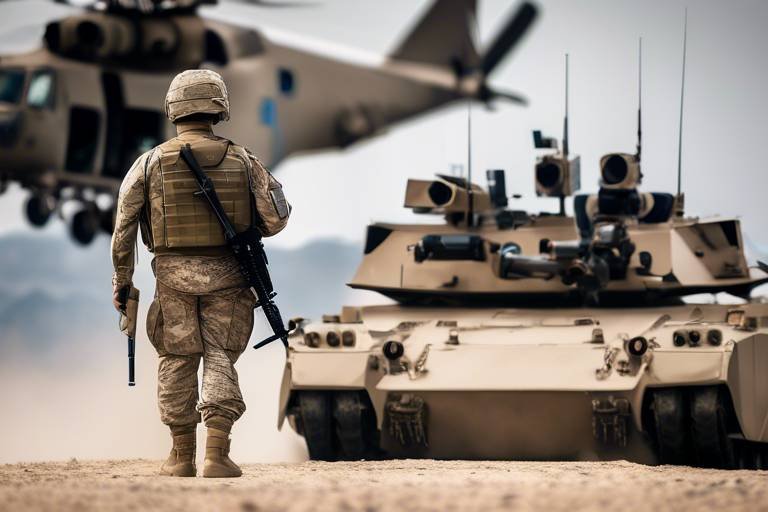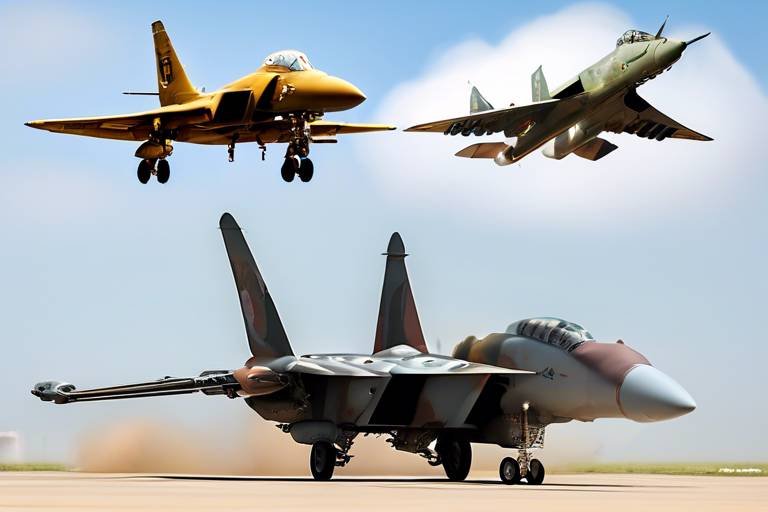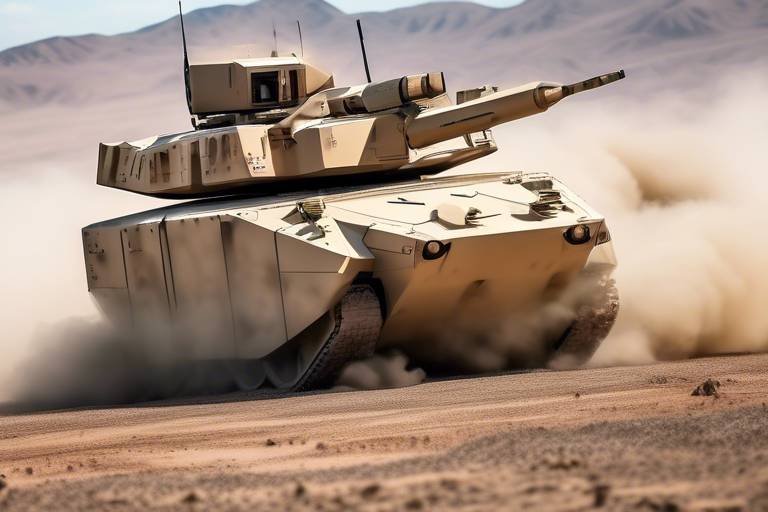The Future of Military Strategy: Embracing Technological Change
The landscape of military strategy is undergoing a seismic shift, driven by rapid technological advancements that are reshaping how nations prepare for and engage in warfare. Gone are the days when battles were fought solely on the ground or in the air; today, the battlefield extends into cyberspace, outer space, and even the realm of artificial intelligence. As we delve into this transformative era, it’s crucial to understand how these changes are not merely enhancements but are fundamentally altering the very fabric of military operations. The future of warfare is not just about adopting new technologies; it’s about redefining strategy itself. Are we ready to embrace this change, or will we be left behind in the dust of outdated tactics?
Artificial intelligence (AI) is revolutionizing military strategy by enhancing decision-making processes, predictive analytics, and the deployment of autonomous systems. Imagine a battlefield where AI algorithms analyze vast amounts of data in real time, enabling commanders to make informed decisions at lightning speed. AI is not just a tool; it’s becoming a critical partner in warfare. For instance, AI-driven systems can predict enemy movements, assess risks, and even control drones for surveillance or combat missions. The implications are staggering: faster decisions can lead to reduced casualties and more effective operations. However, this shift raises questions about the reliability of AI in high-stakes situations and the potential for errors that could have catastrophic consequences.
As warfare increasingly shifts to the digital realm, cybersecurity emerges as a paramount concern. The military infrastructure is now as vulnerable to cyberattacks as it is to conventional strikes. Protecting sensitive data and communication systems is not just a technical challenge; it’s a strategic necessity. Nations are investing heavily in cybersecurity measures, employing advanced encryption techniques and developing robust defense protocols to counter cyber threats. The stakes are high; a successful cyberattack can cripple military operations, disrupt supply chains, and even manipulate public perception. Thus, the digital battlefield is as crucial as any physical front, and military leaders must adapt their strategies accordingly.
The rise of unmanned aerial vehicles (UAVs) and ground robots is transforming combat operations in ways we are only beginning to understand. These technologies provide significant advantages, such as reducing human risk in dangerous missions and enhancing reconnaissance capabilities. For example, drones can gather intelligence in hostile environments without putting pilots in harm’s way. However, the use of such systems also brings ethical considerations to the forefront. How do we ensure accountability when machines make life-and-death decisions? As we integrate more robotics into military strategy, establishing clear guidelines for their use becomes essential.
In the age of big data, analytics plays a crucial role in modern military operations. The ability to collect, analyze, and leverage vast amounts of data enhances situational awareness and informs strategic decision-making. Military leaders can now access real-time information from various sources, including satellite imagery, social media, and intelligence reports. This data-driven approach allows for a more nuanced understanding of the battlefield, enabling forces to anticipate enemy actions and respond effectively. However, with great power comes great responsibility; the ethical implications of data collection and surveillance must be carefully considered to avoid infringing on privacy rights.
The militarization of space is rapidly becoming a critical aspect of national defense strategies. As nations vie for dominance in this new frontier, the implications of space operations are profound. Satellites play a vital role in communication, navigation, and reconnaissance, making them strategic assets that must be protected. The emergence of space as a military domain raises questions about international treaties and the potential for conflict beyond our planet. How do we ensure that space remains a peaceful domain while also safeguarding national interests? The answers to these questions will shape the future of military strategy.
Hybrid warfare represents a complex blend of traditional military tactics and irregular strategies, making it a formidable challenge for modern militaries. This approach allows nations to adapt to changing circumstances and exploit vulnerabilities in their adversaries. For instance, combining conventional forces with cyber operations and information warfare can create a multi-faceted threat that is difficult to counter. As military planners grapple with this evolving landscape, the need for flexible and adaptive strategies becomes increasingly clear. The future of military planning will require a deep understanding of both conventional and unconventional tactics.
In an era of global security challenges, cooperation among nations is more crucial than ever. Military alliances and joint operations play a vital role in addressing common threats and enhancing strategic capabilities. The complexities of modern warfare necessitate a collaborative approach, where sharing intelligence and resources can lead to more effective responses. As nations work together, they must navigate the delicate balance between sovereignty and collective security, ensuring that alliances strengthen rather than compromise national interests.
As technology advances, so do the ethical dilemmas associated with military operations. The use of AI, drones, and cyber capabilities raises significant moral questions about accountability, civilian casualties, and the nature of warfare itself. Establishing guidelines for the ethical use of emerging technologies is imperative to ensure that military operations align with international humanitarian laws. The future of military strategy must not only focus on effectiveness but also on the moral implications of the methods employed.
As technology evolves, military training methods must also adapt. Virtual reality (VR) and simulation technologies are enhancing training effectiveness, allowing soldiers to experience realistic scenarios without the associated risks. These tools enable forces to prepare for future conflicts in a controlled environment, fostering skills that are essential for success on the battlefield. By investing in innovative training methods, militaries can ensure that their personnel are well-equipped to face the challenges of modern warfare.
- What role does AI play in modern military strategy?
AI enhances decision-making, predictive analytics, and operational efficiency, reshaping battlefield dynamics. - Why is cybersecurity important in military operations?
As warfare shifts to the digital realm, protecting military infrastructure from cyber threats is crucial for national security. - How are unmanned systems changing combat operations?
UAVs and robots reduce human risk and enhance reconnaissance capabilities, but raise ethical concerns regarding accountability. - What is hybrid warfare?
Hybrid warfare combines traditional military tactics with unconventional strategies, creating complex challenges for military planners.

The Role of Artificial Intelligence in Warfare
Artificial Intelligence (AI) is no longer just a concept from science fiction; it has become a transformative force in military strategy and operations. Imagine a battlefield where decisions are made in milliseconds, where the fog of war is lifted by data-driven insights, and where autonomous systems take on dangerous tasks that would otherwise risk human lives. This is not a distant future; it is happening right now. AI is reshaping the way militaries approach warfare, enhancing their capabilities and operational efficiency.
One of the most significant advantages of AI in warfare is its ability to process vast amounts of data quickly. In today's complex combat environments, the sheer volume of information can overwhelm traditional decision-making processes. AI algorithms can analyze real-time data from various sources—satellite imagery, drone surveillance, and even social media—to provide commanders with actionable intelligence. This capability allows military leaders to make informed decisions faster than ever before, potentially turning the tide of battle.
Moreover, AI enhances predictive analytics, allowing military forces to anticipate enemy movements and strategies. By leveraging machine learning models, militaries can simulate various scenarios and outcomes based on historical data and current trends. This predictive power is akin to having a crystal ball that reveals potential future events, enabling strategists to stay one step ahead of their adversaries.
Autonomous systems, such as drones and robotic ground vehicles, are another area where AI is making a significant impact. These systems can operate independently or in coordination with human operators, performing tasks ranging from reconnaissance to combat support. For example, UAVs equipped with AI can autonomously identify and engage targets, reducing the need for direct human intervention. This not only minimizes risk to personnel but also increases operational tempo, allowing for more dynamic responses to threats.
However, the integration of AI into military operations is not without its challenges. The reliance on technology raises questions about accountability and ethical considerations. Who is responsible when an autonomous system makes a mistake? Furthermore, the potential for AI to be used in cyber warfare and misinformation campaigns poses significant risks. As militaries embrace these technologies, they must also develop robust frameworks to address these ethical dilemmas.
In summary, AI is fundamentally altering the landscape of warfare. Its capabilities in data analysis, predictive modeling, and autonomous operations are enhancing military effectiveness and reshaping strategic planning. As we move forward, it is crucial for military organizations to not only harness the power of AI but also to navigate the ethical complexities that accompany its use. The future of military strategy will undoubtedly be intertwined with advancements in AI, making it essential for nations to adapt and innovate in this rapidly evolving domain.
- How is AI currently used in military operations? AI is used for data analysis, predictive modeling, and controlling autonomous systems like drones and robots.
- What are the ethical concerns surrounding AI in warfare? Key concerns include accountability for autonomous actions, the potential for misuse in cyber warfare, and the implications of AI decision-making in combat scenarios.
- Will AI replace human soldiers in the future? While AI will enhance capabilities, it is unlikely to fully replace human soldiers, as complex decision-making and ethical considerations still require human oversight.
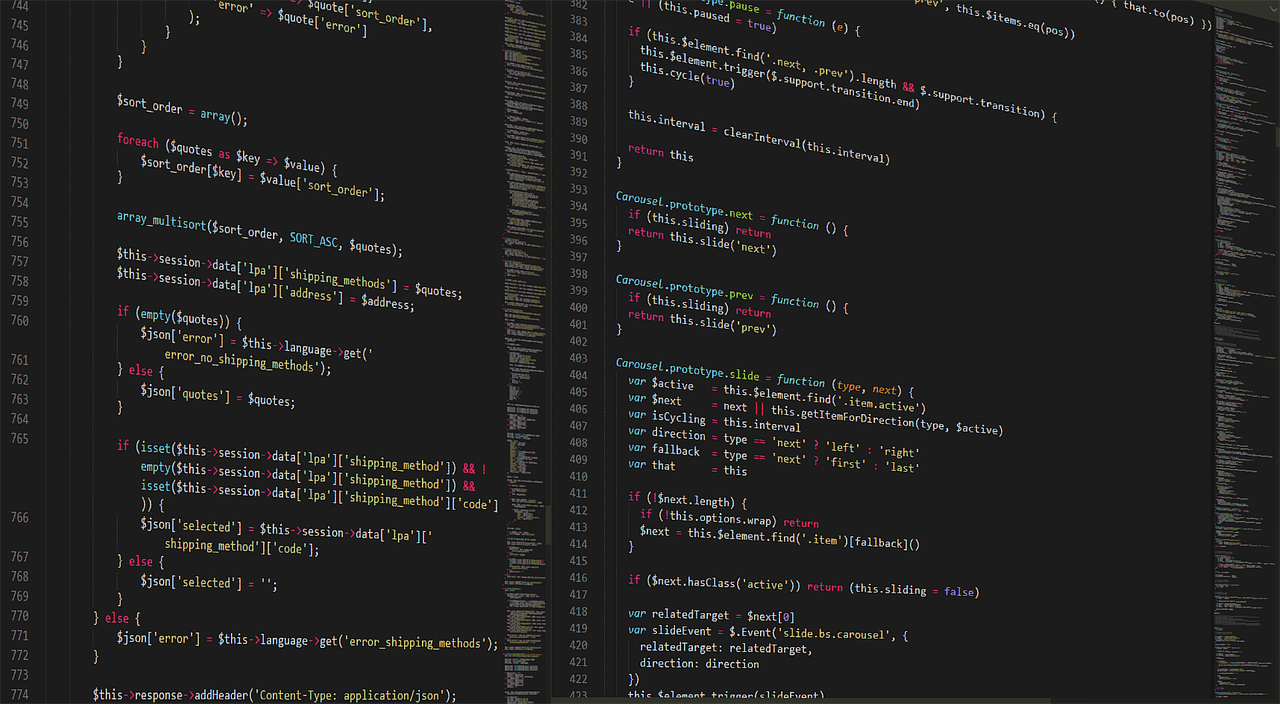
Cybersecurity: The New Frontline
In today’s digital age, the battlefield has expanded beyond traditional terrains, making cybersecurity the new frontline of military strategy. As nations increasingly rely on technology for communication, intelligence gathering, and operational planning, the importance of safeguarding these digital assets cannot be overstated. Imagine a world where a single cyber attack could cripple a country's military capabilities, paralyze its infrastructure, and disrupt its economy. This is not a dystopian future; it’s a reality that military strategists are grappling with today.
The evolution of warfare has led to a significant increase in cyber threats, which can range from malware attacks to sophisticated state-sponsored hacking. These threats pose a substantial risk not only to military operations but also to national security as a whole. For instance, a breach in military communications can lead to miscommunication during critical operations, potentially costing lives. Therefore, protecting military infrastructure from cyber threats is now a top priority.
To combat these threats, military organizations are adopting a multi-faceted approach that includes advanced technologies, strategic partnerships, and rigorous training programs. Here are some key strategies being implemented:
- Continuous Monitoring: Military networks are under constant surveillance to detect and respond to threats in real-time.
- Cyber Hygiene: Regular updates and patches are crucial to protect against vulnerabilities in software.
- Collaboration with Tech Firms: Partnering with cybersecurity companies enhances the military's ability to counteract sophisticated attacks.
Moreover, the concept of cyber warfare has emerged, where nations can engage in offensive operations against each other's digital infrastructure. This new form of conflict requires a shift in military training and strategy. Personnel must now be equipped with not only traditional combat skills but also a deep understanding of digital warfare tactics.
As we move forward, the implications of cybersecurity in military operations will only grow. The potential for cyber attacks to disrupt critical services like power grids, communication systems, and even water supply systems means that military planners must think beyond the battlefield. They need to consider how to protect these vital assets, ensuring that they remain operational even in the face of cyber threats.
In conclusion, as military strategy evolves, so too must our understanding of cybersecurity. It is no longer just an IT issue; it is a fundamental component of national defense. The future of warfare will undoubtedly see a greater emphasis on cybersecurity measures, with nations investing heavily in technology and training to secure their digital frontlines.
Q1: What is the role of cybersecurity in modern military operations?
A1: Cybersecurity plays a crucial role in protecting military communications, data, and operational integrity against cyber threats, ensuring that military forces can operate effectively.
Q2: How are military organizations adapting to cyber threats?
A2: Military organizations are implementing continuous monitoring, regular software updates, and collaborations with cybersecurity firms to enhance their defenses against cyber attacks.
Q3: What are the implications of cyber warfare?
A3: Cyber warfare can disrupt critical infrastructure, leading to severe consequences for national security, and requires military planners to consider digital vulnerabilities in their strategies.

Unmanned Systems and Robotics
Unmanned systems and robotics are not just the future of warfare; they are the present reality transforming how military operations are conducted. Imagine a battlefield where soldiers are not the only entities making tactical decisions; instead, drones and robotic systems are taking on roles that were once thought to be exclusively human. This shift is akin to the evolution of the horse-drawn carriage to the automobile—it's a game-changer. The integration of unmanned aerial vehicles (UAVs) and ground robots into military strategy enhances operational capabilities, reduces risk to human life, and increases efficiency in combat scenarios.
One of the most significant advantages of unmanned systems is their ability to conduct reconnaissance missions without putting personnel in harm's way. For instance, UAVs can fly over hostile territories, gathering intelligence and providing real-time data to commanders. This capability is crucial for making informed decisions on the battlefield. In fact, the use of drones has revolutionized intelligence-gathering methods, allowing for precise targeting and minimizing collateral damage. The following table illustrates the key applications of unmanned systems in modern warfare:
| Type of Unmanned System | Primary Application | Advantages |
|---|---|---|
| Unmanned Aerial Vehicles (UAVs) | Surveillance and Reconnaissance | Real-time data collection, reduced risk to personnel |
| Unmanned Ground Vehicles (UGVs) | Logistics and Explosive Ordnance Disposal | Enhanced safety, ability to operate in hazardous environments |
| Autonomous Underwater Vehicles (AUVs) | Naval Reconnaissance and Mine Detection | Stealthy operations, ability to cover large areas |
However, the deployment of these technologies is not without its challenges. The ethical implications of using robots in warfare raise questions that society must grapple with. For instance, if a robotic system makes a decision that results in civilian casualties, who is held accountable? This dilemma is reminiscent of the age-old question surrounding the use of nuclear weapons: how do we balance technological advancement with moral responsibility? The military must establish clear guidelines and protocols to govern the use of unmanned systems, ensuring that they are employed in ways that adhere to international law and ethical standards.
Moreover, the reliance on unmanned systems introduces vulnerabilities that adversaries can exploit. For example, while UAVs can provide critical intelligence, they can also be hacked or jammed, rendering them ineffective. As a result, military strategists must consider not only how to utilize these technologies but also how to protect them from potential threats. This duality of dependence and vulnerability is a tightrope that modern militaries must walk.
As we look to the future, the role of unmanned systems and robotics in military operations will only expand. The potential for autonomous combat systems—machines capable of making battlefield decisions without human intervention—poses both exciting possibilities and daunting challenges. Will we see a day when machines decide the outcome of wars? Or will human oversight remain a crucial component of military strategy? The answers to these questions will shape the future landscape of warfare, making it essential for military leaders to engage in ongoing discussions about the implications of these technologies.
- What are unmanned systems? Unmanned systems refer to vehicles and devices that operate without a human pilot on board, including drones, ground robots, and underwater vehicles.
- How do unmanned systems enhance military operations? They provide real-time intelligence, reduce risks to personnel, and can operate in environments that are hazardous or difficult for humans.
- What are the ethical concerns surrounding unmanned systems? Key concerns include accountability for actions taken by autonomous systems and the potential for civilian casualties.
- Can unmanned systems be hacked? Yes, like any connected technology, unmanned systems are vulnerable to cyber attacks, which can compromise their effectiveness.
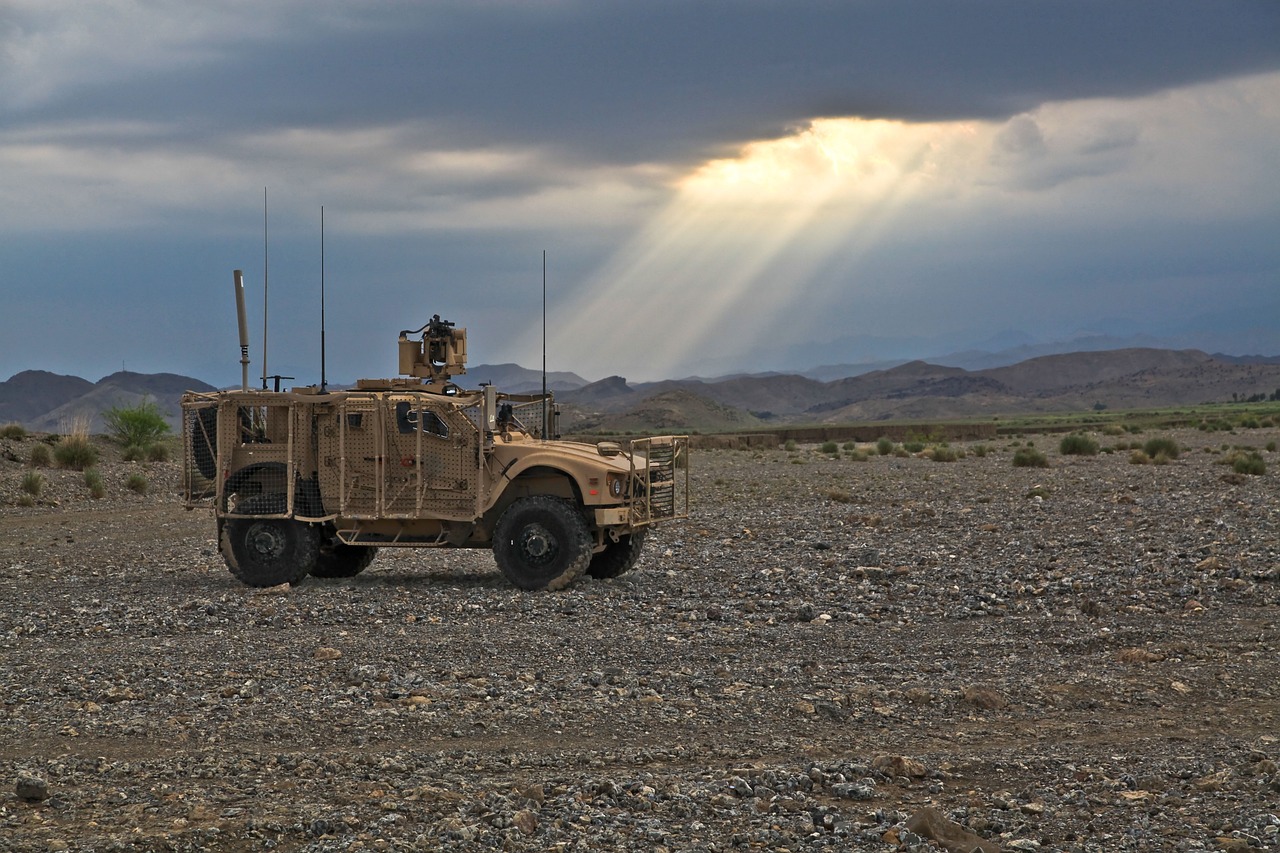
Data Analytics and Intelligence Gathering
In today's fast-paced world, data analytics has become the backbone of military operations, enabling forces to make informed decisions swiftly and effectively. Imagine a battlefield where decisions are not just based on intuition but are driven by real-time data. This is not science fiction; it's the reality of modern warfare. The ability to gather, analyze, and interpret vast amounts of data is transforming how military strategists operate, providing them with a significant edge over adversaries.
Data analytics in military contexts encompasses a range of techniques, including predictive modeling, data mining, and machine learning. These methods allow military leaders to anticipate enemy movements, optimize resource allocation, and enhance operational effectiveness. For instance, by analyzing patterns in troop movements and logistics, commanders can predict where their opponents might strike next, enabling them to deploy forces more strategically.
Furthermore, the integration of intelligence gathering with data analytics creates a powerful synergy. Traditional intelligence methods, such as reconnaissance and surveillance, can now be augmented with advanced analytics to provide deeper insights. This combination allows for a more comprehensive understanding of the operational environment. For example, satellite imagery can be analyzed using sophisticated algorithms to detect changes in enemy infrastructure or troop concentrations, providing critical information that can shape military strategy.
However, with great power comes great responsibility. The reliance on data analytics also raises concerns regarding data security and privacy. As military operations become increasingly dependent on data-driven insights, ensuring the integrity and security of this data is paramount. Cyber threats can compromise sensitive intelligence, leading to disastrous consequences on the battlefield. Thus, military organizations must invest in robust cybersecurity measures to protect their data assets.
To illustrate the impact of data analytics on military operations, consider the following table that outlines key benefits:
| Benefit | Description |
|---|---|
| Enhanced Decision Making | Real-time data analysis allows for quicker and more informed decisions. |
| Improved Situational Awareness | Data analytics provides a clearer picture of the battlefield, helping commanders understand the dynamics at play. |
| Resource Optimization | Analytics helps in allocating resources more effectively, ensuring that troops are positioned where they are most needed. |
| Predictive Capabilities | Anticipating enemy actions based on historical data and current trends can provide a strategic advantage. |
In conclusion, as we move further into the digital age, the role of data analytics and intelligence gathering in military strategy will only continue to grow. The ability to harness data not only enhances operational capabilities but also ensures that military forces remain agile and responsive to the ever-changing dynamics of warfare. With the right tools and strategies in place, the military can turn data into actionable intelligence, shaping the future of defense operations.
- What is data analytics in military operations? Data analytics refers to the systematic computational analysis of data, which helps military forces make informed decisions based on real-time information.
- How does intelligence gathering complement data analytics? Intelligence gathering provides raw data that, when analyzed, can yield insights about enemy movements and operational environments.
- What are the main challenges of using data analytics in the military? The primary challenges include data security, privacy concerns, and the need for robust cybersecurity measures to protect sensitive information.

Space as a Military Domain
The concept of is no longer a distant notion reserved for science fiction. As nations grapple with the realities of modern warfare, the strategic importance of outer space has surged to the forefront of military planning. With the advent of satellite technology, nations can now monitor activities on Earth, communicate instantly, and gather intelligence with unparalleled precision. But what does this mean for the future of military operations?
In recent years, we've witnessed a significant shift in how countries perceive space. No longer just a realm for exploration and scientific research, space has become a battleground for national security. The rise of satellite constellations, such as those employed for GPS and surveillance, has created a landscape where control over space assets can dictate the outcomes of terrestrial conflicts. Imagine a world where a nation can disable an enemy's communication satellites, rendering their forces blind and deaf. This is the reality that military strategists are now preparing for.
Moreover, the militarization of space involves not just the deployment of satellites but also the development of anti-satellite weapons, which can target and destroy enemy satellites. This arms race in space has raised eyebrows globally, as countries like the United States, Russia, and China invest heavily in technologies that can ensure their dominance in this new frontier. The implications are profound: the potential for conflict in space raises questions about the safety of civilian satellites and the long-term sustainability of space as a domain for peaceful exploration.
One of the most pressing challenges in this evolving military landscape is the establishment of rules of engagement in space. Unlike traditional warfare, where rules and treaties govern conduct, space remains largely unregulated. This lack of clear guidelines can lead to misunderstandings and escalations that could spiral out of control. As nations continue to expand their military capabilities in space, the need for international cooperation and dialogue becomes increasingly critical.
To illustrate the growing significance of space in military strategy, consider the following table that outlines key developments in space military capabilities:
| Country | Key Developments | Strategic Goals |
|---|---|---|
| United States | Creation of the Space Force, investment in satellite defense systems | Maintain space superiority, protect national interests |
| Russia | Development of anti-satellite weapons, enhanced reconnaissance satellites | Counter U.S. dominance, secure strategic assets |
| China | Launch of multiple satellite constellations, anti-satellite capabilities | Establish a leading position in space, enhance military operations |
As we look to the future, the question arises: how will nations balance their ambitions in space with the need for global security? The potential for collaboration exists, as countries can share resources and intelligence to mitigate risks. However, the competitive nature of international relations often complicates these efforts.
In conclusion, the militarization of space is a reality that cannot be ignored. As countries vie for control over this new domain, the implications for warfare and defense are profound. The need for clear regulations, international cooperation, and strategic foresight has never been more critical. The future of military strategy will undoubtedly be shaped by how effectively nations can navigate the complexities of space as a military domain.
- What is the significance of space in military strategy? Space provides critical capabilities for communication, surveillance, and navigation, making it essential for modern military operations.
- Are there any treaties governing military activities in space? Currently, there are limited regulations, with the Outer Space Treaty being the primary framework, but it lacks specific guidelines on military activities.
- What are anti-satellite weapons? These are technologies designed to disable or destroy satellites, impacting an adversary's military and civilian capabilities.
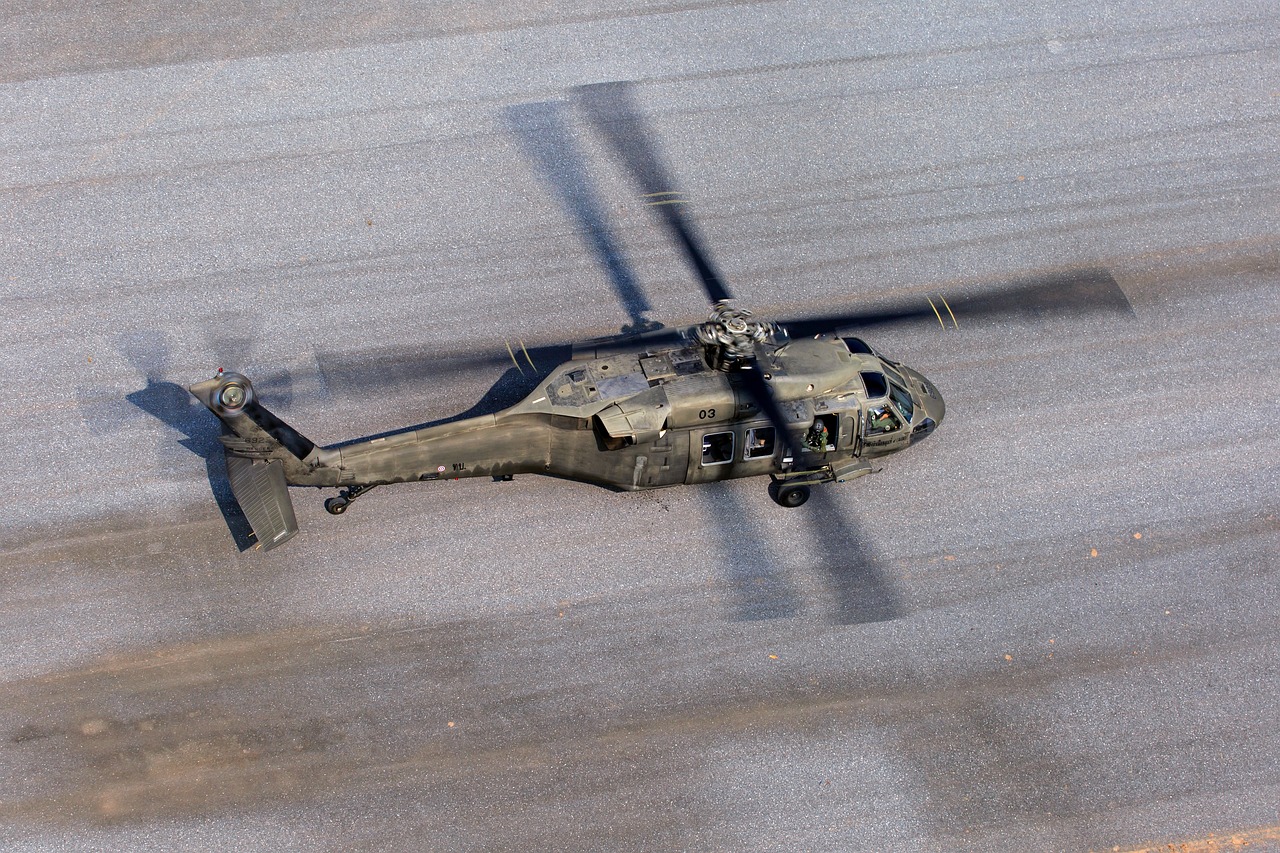
Hybrid Warfare: Blending Conventional and Unconventional Tactics
In today's complex geopolitical landscape, hybrid warfare has emerged as a dominant strategy, seamlessly blending both conventional and unconventional tactics. Imagine a chess game where the pieces can suddenly transform into completely different characters—this is the essence of hybrid warfare. Traditional military forces are now complemented by irregular tactics, making it increasingly challenging for nations to predict and counter threats. As we delve deeper into this multifaceted approach, it becomes clear that the lines between soldier and civilian, combatant and non-combatant, are becoming blurred.
One of the defining features of hybrid warfare is its adaptability. Military planners must now think beyond the battlefield and consider a range of tactics that include cyber operations, propaganda, and economic warfare. For instance, a nation might engage in a conventional military assault while simultaneously launching a cyber attack to disrupt communications or sow discord among the enemy's populace. This dual approach not only confuses the opponent but also allows the aggressor to exploit vulnerabilities across multiple domains.
To better understand how hybrid warfare manifests, let’s look at some key characteristics:
- Multi-Domain Operations: Hybrid warfare operates across land, air, sea, and cyberspace, requiring a comprehensive strategy that integrates all military branches and capabilities.
- Use of Proxy Forces: Nations may employ proxy groups to carry out operations, allowing them to maintain plausible deniability while still pursuing strategic objectives.
- Information Warfare: Controlling the narrative is critical. Misinformation campaigns and psychological operations can destabilize societies and undermine trust in governments.
- Economic Manipulation: Hybrid warfare can also involve economic tactics, such as sanctions or trade wars, to weaken an adversary without direct military confrontation.
Moreover, hybrid warfare is not just a military concern; it has profound implications for national security and public policy. Governments must adapt their defense strategies to address these new challenges. This means investing in intelligence capabilities that can identify and respond to hybrid threats quickly. The integration of advanced technologies such as artificial intelligence and big data analytics can provide military strategists with the tools they need to anticipate and counter hybrid tactics effectively.
As we look to the future, the significance of hybrid warfare will only grow. Nations are increasingly recognizing that the battlefield is not confined to physical territory but extends into the realm of information and perception. This shift necessitates a reevaluation of military training and operational strategies to prepare forces for a diverse array of potential conflicts.
In conclusion, understanding hybrid warfare is crucial for any nation seeking to maintain its security in an unpredictable world. It challenges traditional notions of warfare and compels military and political leaders to think creatively and strategically. As we navigate this evolving landscape, the ability to blend conventional and unconventional tactics will be a defining factor in future conflicts.
What is hybrid warfare?
Hybrid warfare refers to a strategy that combines conventional military tactics with unconventional methods, such as cyber operations and propaganda, to achieve strategic objectives.
Why is hybrid warfare significant?
Hybrid warfare is significant because it reflects the complexities of modern conflict, where traditional military engagements are often supplemented by irregular tactics that can confuse and destabilize adversaries.
How can nations prepare for hybrid warfare?
Nations can prepare for hybrid warfare by investing in intelligence capabilities, enhancing cybersecurity measures, and training military personnel to operate across multiple domains.
What role does information play in hybrid warfare?
Information plays a critical role in hybrid warfare, as controlling narratives and disseminating misinformation can undermine trust and create divisions within an adversary's society.
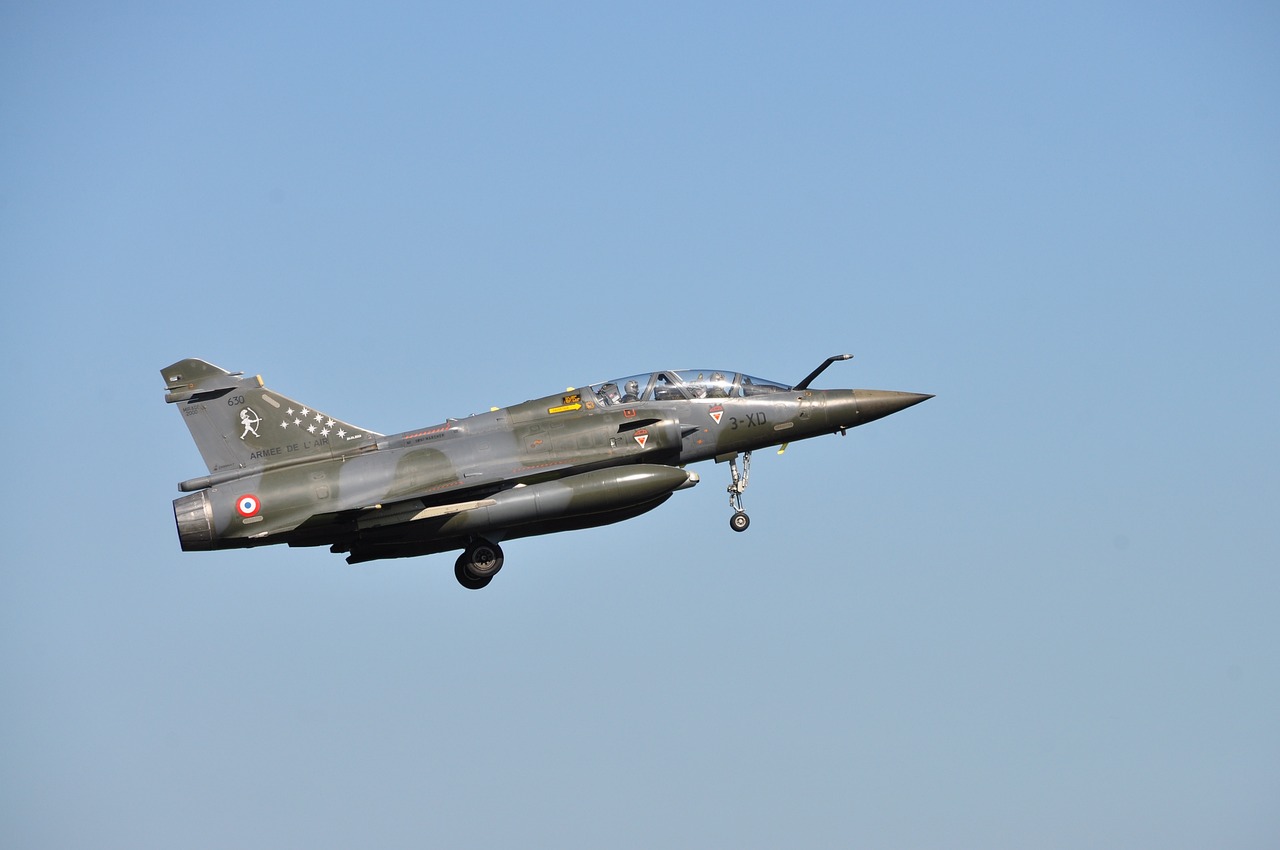
International Collaboration and Military Alliances
In an era where threats to national security are increasingly complex and multifaceted, international collaboration and military alliances have become more crucial than ever. Countries around the globe are recognizing that no single nation can effectively address the challenges of modern warfare alone. Instead, we see a trend toward forming strategic partnerships that enhance collective defense capabilities. This shift is not just about pooling resources; it’s about sharing intelligence, technology, and expertise to create a unified front against common adversaries.
One of the most significant examples of international military collaboration is the NATO alliance. Established in 1949, NATO has evolved from a traditional defense pact into a comprehensive security organization. Its member states engage in joint exercises, intelligence sharing, and coordinated responses to crises. The recent focus on cyber threats and hybrid warfare has prompted NATO to adapt its strategies, ensuring that member nations are prepared for a wide range of scenarios. This collaborative spirit fosters not only military readiness but also political solidarity among nations, reinforcing the idea that an attack on one is an attack on all.
Moreover, the rise of coalition warfare showcases how nations can come together in response to specific threats. For instance, during the fight against ISIS, a diverse coalition of countries—from the United States to European allies and regional partners—worked together to dismantle the terror group. This collaboration involved sharing intelligence, conducting joint operations, and providing logistical support, demonstrating the effectiveness of combined military efforts. The lessons learned from such operations are invaluable, shaping future military strategies and alliances.
However, forming military alliances is not without its challenges. Differences in political ideologies, military capabilities, and strategic priorities can create friction among allies. For instance, while some nations may prioritize counter-terrorism efforts, others might focus on traditional state-based threats. This divergence can lead to misunderstandings and hinder effective collaboration. Therefore, it is imperative for nations to engage in open dialogue and establish clear objectives to align their military strategies.
Furthermore, the rapid advancement of technology necessitates that military alliances adapt continuously. The integration of emerging technologies—such as artificial intelligence and cyber capabilities—into military operations requires a shared understanding and cooperative approach among allies. Nations must work together to establish standards and protocols that govern the use of these technologies, ensuring that they are employed ethically and effectively in combat scenarios.
In conclusion, the future of military strategy will heavily rely on international collaboration and the strength of military alliances. As we navigate an increasingly complex global landscape, the ability to work together will be paramount. Nations that embrace collaboration will not only enhance their defense capabilities but also contribute to global stability. The road ahead may be fraught with challenges, but the potential for a safer world through united efforts is a goal worth striving for.
- What is the importance of military alliances?
Military alliances enhance collective security, allowing nations to pool resources, share intelligence, and coordinate responses to threats. - How do international collaborations impact military strategy?
They lead to more comprehensive strategies that consider various perspectives and capabilities, resulting in more effective military operations. - What challenges do military alliances face?
Differences in political ideologies, military capabilities, and strategic priorities can create friction among allies. - How is technology influencing military collaboration?
The rapid advancement of technology requires nations to work together to establish standards and protocols for its ethical and effective use in warfare.

Ethical Considerations in Modern Warfare
As we venture further into the realm of modern warfare, the ethical considerations surrounding military operations are becoming increasingly complex and critical. With technological advancements such as artificial intelligence, drones, and cyber capabilities, the moral implications of how wars are fought are under intense scrutiny. One might ask, "How do we balance the need for security with the ethical treatment of combatants and civilians?" This question is at the heart of contemporary military ethics.
One of the most pressing issues is the use of autonomous weapons systems. These systems, capable of making decisions without human intervention, raise significant concerns about accountability. If an autonomous drone makes a mistake and causes civilian casualties, who is responsible? The manufacturer? The military leader who deployed it? Or is it simply an unfortunate consequence of technological advancement? The lack of clear accountability can lead to a dangerous precedent where ethical lines are blurred.
Moreover, the advent of cyber warfare introduces another layer of ethical dilemmas. Cyber attacks can disrupt critical infrastructure, leading to unintended consequences for civilian populations. For instance, hacking into a power grid could leave thousands without electricity, potentially endangering lives. The challenge here is to establish ethical boundaries that prevent such actions from becoming the norm in military strategy.
Additionally, data privacy and surveillance have become hot-button issues in modern warfare. The collection of vast amounts of data for intelligence purposes raises questions about the invasion of privacy and the potential for misuse of information. Are we sacrificing our personal freedoms for the sake of national security? This dilemma is particularly relevant in an age where data is often considered the new oil; it is valuable, but it also has the potential to be exploited.
To navigate these ethical waters, military organizations must develop comprehensive guidelines that address the implications of emerging technologies. This includes establishing rules of engagement that are not only effective but also uphold humanitarian principles. The challenge lies in creating a framework that is adaptable to the rapid pace of technological change while remaining grounded in ethical considerations.
In conclusion, as we embrace the future of warfare, it is imperative to prioritize ethical considerations alongside technological innovation. The decisions made today will shape the landscape of military operations for generations to come. By fostering a culture of ethical responsibility within military ranks, we can ensure that advancements in warfare do not come at the cost of our moral compass.
- What are autonomous weapons systems? Autonomous weapons systems are military technologies capable of selecting and engaging targets without human intervention.
- How does cyber warfare affect civilians? Cyber warfare can disrupt essential services such as power and healthcare, potentially endangering civilian lives.
- What is the role of data privacy in military operations? Data privacy concerns arise from the collection and use of personal information for intelligence purposes, raising ethical questions about surveillance.
- How can military organizations ensure ethical practices? By developing comprehensive guidelines and rules of engagement that prioritize humanitarian principles and accountability.

The Future of Military Training and Simulation
As we stand on the precipice of a new era in military training, the integration of advanced technologies is reshaping how armed forces prepare for conflict. Imagine a world where soldiers can engage in realistic combat scenarios without ever leaving their base. This is not science fiction; it's the future of military training and simulation. With the advent of virtual reality (VR) and augmented reality (AR), training programs are becoming more immersive and effective than ever before. These technologies allow soldiers to experience high-stakes environments in a controlled setting, enhancing their readiness and adaptability.
The benefits of these cutting-edge training methods are manifold. For one, they significantly reduce the costs associated with traditional training exercises, which often require extensive resources, personnel, and time. By utilizing VR and AR, military organizations can simulate everything from urban warfare to aerial dogfights, all within a digital landscape. This not only saves money but also allows for more frequent and varied training scenarios, which is crucial in preparing troops for the unpredictable nature of modern warfare.
Moreover, the data generated from these simulations can be analyzed to identify strengths and weaknesses in a unit's performance. This data-driven approach enables military leaders to tailor training programs to address specific shortcomings, ultimately improving operational effectiveness. In a way, it's like having a coach who can provide instant feedback, helping soldiers refine their skills in real-time.
However, the transition to high-tech training methods isn't without its challenges. One major concern is the need for high-quality hardware and software. Not all military branches have the budget or infrastructure to implement these advanced systems. Furthermore, there’s the question of ensuring that all personnel are adequately trained to use these new technologies. A soldier proficient in traditional training methods might struggle initially when faced with a VR simulation. Therefore, a phased approach to technology integration is essential, ensuring that all troops can adapt smoothly.
Another consideration is the ethical implications of using simulation technologies. While VR and AR can create incredibly realistic scenarios, the potential for desensitization to violence is a concern. Military leaders must strike a balance between realism and the psychological well-being of their troops. As such, incorporating psychological support systems alongside these training programs is vital. This could involve debriefing sessions after simulations to help soldiers process their experiences and emotions.
Looking ahead, the future of military training and simulation is poised to evolve even further. Innovations such as artificial intelligence and machine learning are set to play a pivotal role in creating adaptive training environments that respond to the individual needs of each soldier. Imagine a training program that learns from a soldier's performance and adjusts the difficulty level in real-time, providing a personalized training experience that maximizes learning outcomes. This level of customization could revolutionize military preparedness, ensuring that every member of the armed forces is ready to face the challenges of modern warfare.
In conclusion, the future of military training and simulation is bright and full of potential. By embracing technological advancements, military organizations can enhance their training methodologies, ensuring that their personnel are not only well-prepared but also resilient and adaptable. As we continue to explore these innovations, the ultimate goal remains clear: to equip our soldiers with the skills and knowledge they need to succeed in an ever-evolving battlefield.
- What are the main benefits of using VR and AR in military training?
VR and AR provide immersive experiences, reduce training costs, and allow for frequent and varied training scenarios. - How does data analysis improve military training?
Data analysis identifies performance strengths and weaknesses, enabling tailored training programs for better operational effectiveness. - What challenges are associated with high-tech military training?
Challenges include the need for quality hardware, software, and ensuring all personnel are trained to use new technologies effectively. - Are there ethical concerns with simulation training?
Yes, there are concerns about desensitization to violence, necessitating psychological support systems alongside training.
Frequently Asked Questions
- How is artificial intelligence changing military strategy?
Artificial intelligence is revolutionizing military strategy by providing enhanced decision-making capabilities, enabling predictive analytics, and developing autonomous systems. This technology allows military leaders to process vast amounts of data quickly, leading to improved operational efficiency and effectiveness on the battlefield.
- What role does cybersecurity play in modern warfare?
Cybersecurity has become a critical component of modern warfare as military operations increasingly rely on digital infrastructure. Protecting military networks from cyber threats is essential to maintain operational integrity and ensure that sensitive information remains secure. Failure to do so can lead to catastrophic consequences in both strategic and tactical scenarios.
- What are unmanned systems and how are they used in combat?
Unmanned systems, including aerial vehicles (UAVs) and ground robots, are transforming combat operations by providing real-time surveillance, reconnaissance, and even direct engagement capabilities without risking human lives. Their use raises important ethical considerations, particularly regarding accountability and the potential for collateral damage.
- How does data analytics enhance military operations?
Big data analytics plays a crucial role in modern military operations by enabling forces to gather, analyze, and interpret vast amounts of information. This enhances situational awareness, informs strategic decision-making, and helps military planners anticipate enemy movements and intentions, ultimately leading to more effective mission outcomes.
- Why is space becoming a military domain?
The militarization of space is essential for national defense as nations seek to secure their interests beyond Earth. Space operations can provide strategic advantages, such as improved communication, surveillance, and navigation capabilities. As more countries invest in space technology, the competition in this domain intensifies, making it a critical aspect of military strategy.
- What is hybrid warfare and how does it affect military planning?
Hybrid warfare refers to the blending of conventional military tactics with unconventional strategies, such as cyber attacks and propaganda. This complex form of conflict challenges traditional military planning and requires nations to adapt their strategies to address a wide range of threats, making flexibility and innovation key components of modern military operations.
- How do military alliances contribute to global security?
Military alliances play a vital role in addressing global security challenges by fostering cooperation among nations. Joint operations enhance strategic capabilities and allow countries to pool resources and expertise to tackle common threats, ultimately promoting stability and peace on a broader scale.
- What ethical dilemmas arise from technological advancements in warfare?
Technological advancements in warfare present significant ethical dilemmas, such as the potential for autonomous weapons to make life-and-death decisions without human intervention. Establishing guidelines for the use of emerging technologies is crucial to ensure that military operations adhere to moral standards and protect civilian lives.
- How is military training evolving with technology?
As technology continues to evolve, military training methods are also adapting. Virtual reality and simulation technologies are being integrated into training programs to enhance effectiveness and prepare forces for future conflicts. These innovations provide realistic scenarios that help soldiers develop critical skills in a safe environment.








